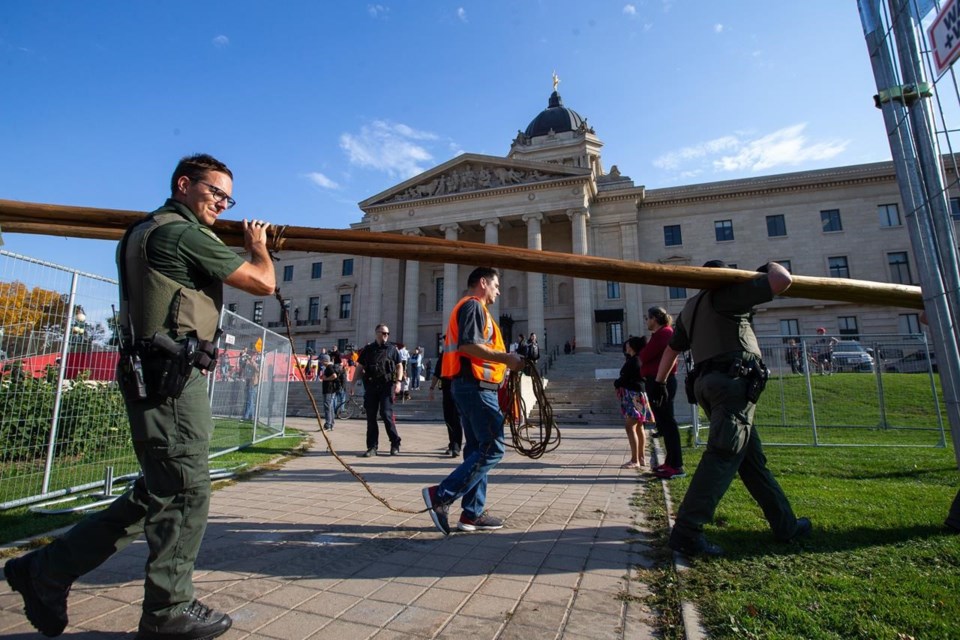Winnipeg police announced charges against five more people Wednesday, a day after dismantling a protest camp on the north lawn of the Manitoba legislature near the main entrance to the building.
They also explained their decision to take down the camp after leaving it since it was set up in June.
"What we saw was an erosion of co-operation and an increase in both rhetoric and aggression, and a complete unwillingness to be reasonable around restricting expansion of the camp," said Dave Dalal, superintendent of uniform operations for the Winnipeg Police Service.
"They were intent on building more and more structures, contrary to the law of the land."
Police said they also found weapons when they moved in — axes, a machete, a metre-long club, body armour and a spear.
The protesters have posted messages and videos online in which they say they had no weapons, only instruments to chop firewood and build teepees.
Si Pih Ko, also known as Trina Francois, told CTV this week that the camp was a peaceful protest with no weapons or violence. Francois made headlines this summer when she sang a Cree song with a rhythm similar to the national anthem to Pope Francis in Alberta.
The camp had been adorned with signs and flags highlighting issues including the discovery of unmarked graves at residential schools, COVID-19 restrictions and conflict in the Middle East.
The demands from the camp kept changing, Dalal said, and police made the decision to move in when they believed there was an increased risk to public safety. Justice Minister Kelvin Goertzen said staff and visitors at the legislature were recently threatened.
The camp originally had one teepee. Another was added in the summer. Protesters attempted to build a third on Monday, but a line of police officers stopped them from bringing in 10-metre poles.
Seven people were arrested Monday and later charged with obstructing a peace officer and supplying an encampment on the legislature grounds.
The five people charged Wednesday are accused of obstructing a peace officer and occupying a structure on the legislature grounds.
The camp, now an empty area surrounded by a security fence, was separate from an Indigenous-led camp on the legislature's east lawn, which has been allowed to continue for more than a year.
Mary Starr, an elder at the east camp who is from Sagkeeng First Nation, said the north camp consisted mostly of non-Indigenous people whose beliefs did not align with those of her camp.
Dalal said police have no immediate plans to dismantle the other camp.
"It's up to us to continue to assess the risks every single day, continue to gather information (and) determine whether the situation has changed to the point where we do need to take a different approach.
"But at this point, we are still on the path of trying to resolve that camp peacefully as well."
— With files from Brittany Hobson
This report by The Canadian Press was first published Oct. 5, 2022.
Steve Lambert, The Canadian Press




